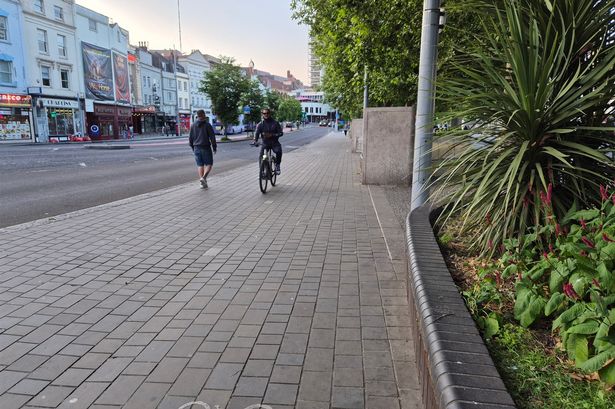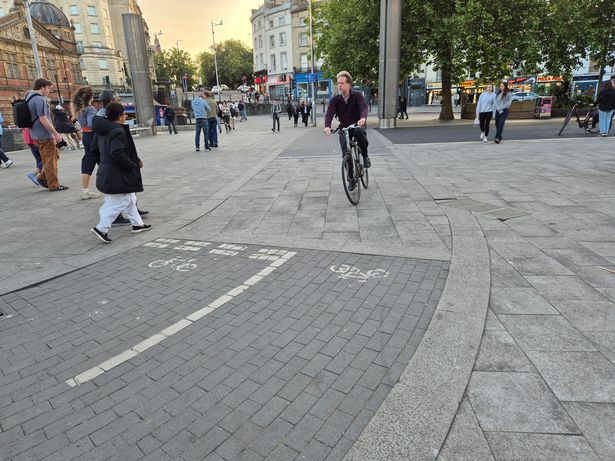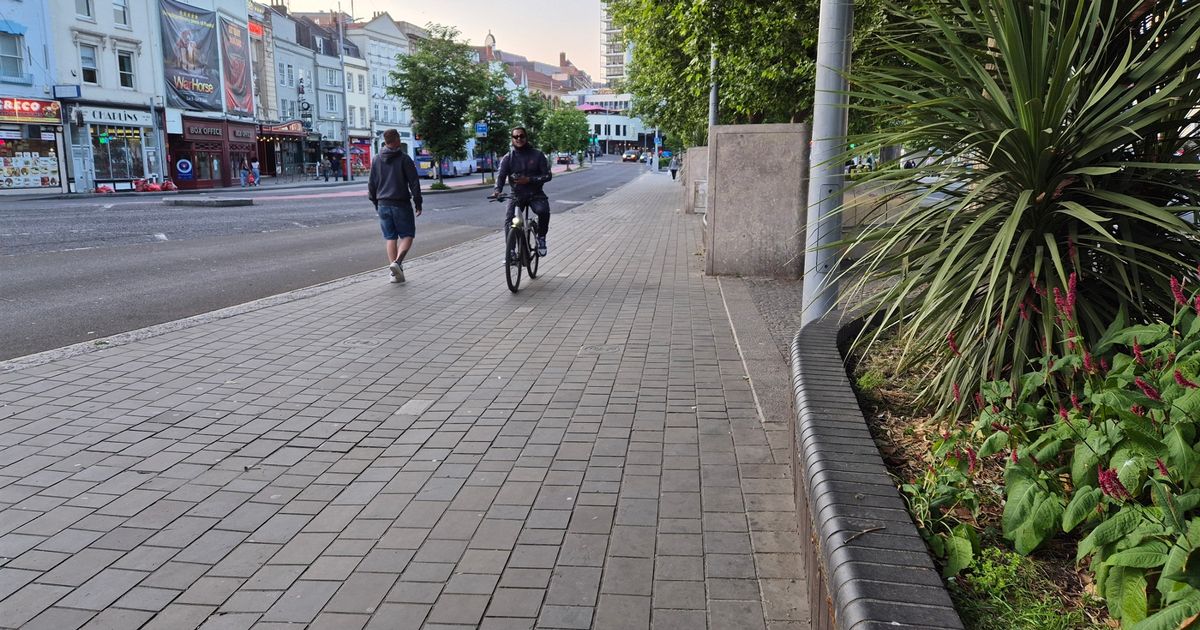The bike path will potentially be turned red in the future, to reduce conflict between people walking and cycling The bike path through the Centre(Image: Alex Seabrook)
The bike path through the Centre(Image: Alex Seabrook)
A barely visible bike path through the Centre will soon be replaced with black tarmac and then potentially red surfacing in future. The planned changes were prompted by concerns the bike lane, which runs along where the fountains used to be, is hard to distinguish from the footpath.
The Centre is often a busy area with many people walking and cycling through. The bike path is a slightly different shade of grey, so many pedestrians don’t realise they have inadvertently strayed onto the cycling lane. Walking campaigners say this causes conflict and feels unsafe.
Bristol City Council is planning a new trial turning some bike lanes red, to reduce conflict between pedestrians and cyclists. But not on the bike path through the Centre, which is probably the source of most conflict between pedestrians and cyclists in Bristol — at least not immediately.
 The path is a darker shade of grey(Image: Alex Seabrook)
The path is a darker shade of grey(Image: Alex Seabrook)
This is because the council is already in the process of hiring contractors to refurbish the bike lane with black tarmac, and changing this to red would delay works from starting. Councillors on the transport policy committee approved the trial of red bike lanes on Thursday, May 15.
Green Councillor David Wilcox said: “I was proposing an amendment to put the area around St Augustine’s Parade into the mix for red high-friction surface. But I understand that the procurement for fixing that area is happening imminently. To change that procurement package right now would actually delay any work happening.
“I don’t want to do that, because it all needs to happen really quickly around that area. I think it would be a bad thing if the committee were to delay it. But I would like some indication that red high-friction surface could be retrospectively applied around St Augustine’s Parade, because it is the one area in Bristol where people do talk about conflict between cyclists and pedestrians.”
The existing stone paving is going to be removed and replaced with black tarmac, to more clearly show where the bike path is. However, where the fountains were has also recently been replaced with black tarmac, although some artwork is planned to be painted on the floor soon. Red surfacing could be applied “in the future” at key conflict points, although it’s unclear when.
The trial will take place on two bike lanes on the Bristol Bridge junction and between Castle Park and the Old Market roundabout. Cameras will assess before and after how much conflict there is between cyclists and pedestrians, and how often people walk onto bike lanes. If the results prove promising, conflict points on other bike lanes will also be turned red.
In a statement to the committee, the Bristol Walking Alliance said: “Many pedestrians, particularly those who have mobility, cognitive, visual or hearing impairments, can be afraid to use spaces which cyclists may enter and cross unexpectedly.
“It has been apparent for some time that the cycle lanes across the Centre in Bristol are a problem. The cycle lanes are not easily distinguishable from the pedestrianised areas, leading to conflict between pedestrians and cyclists.”
Click here to join our WhatsApp groupPrivacy Notice
